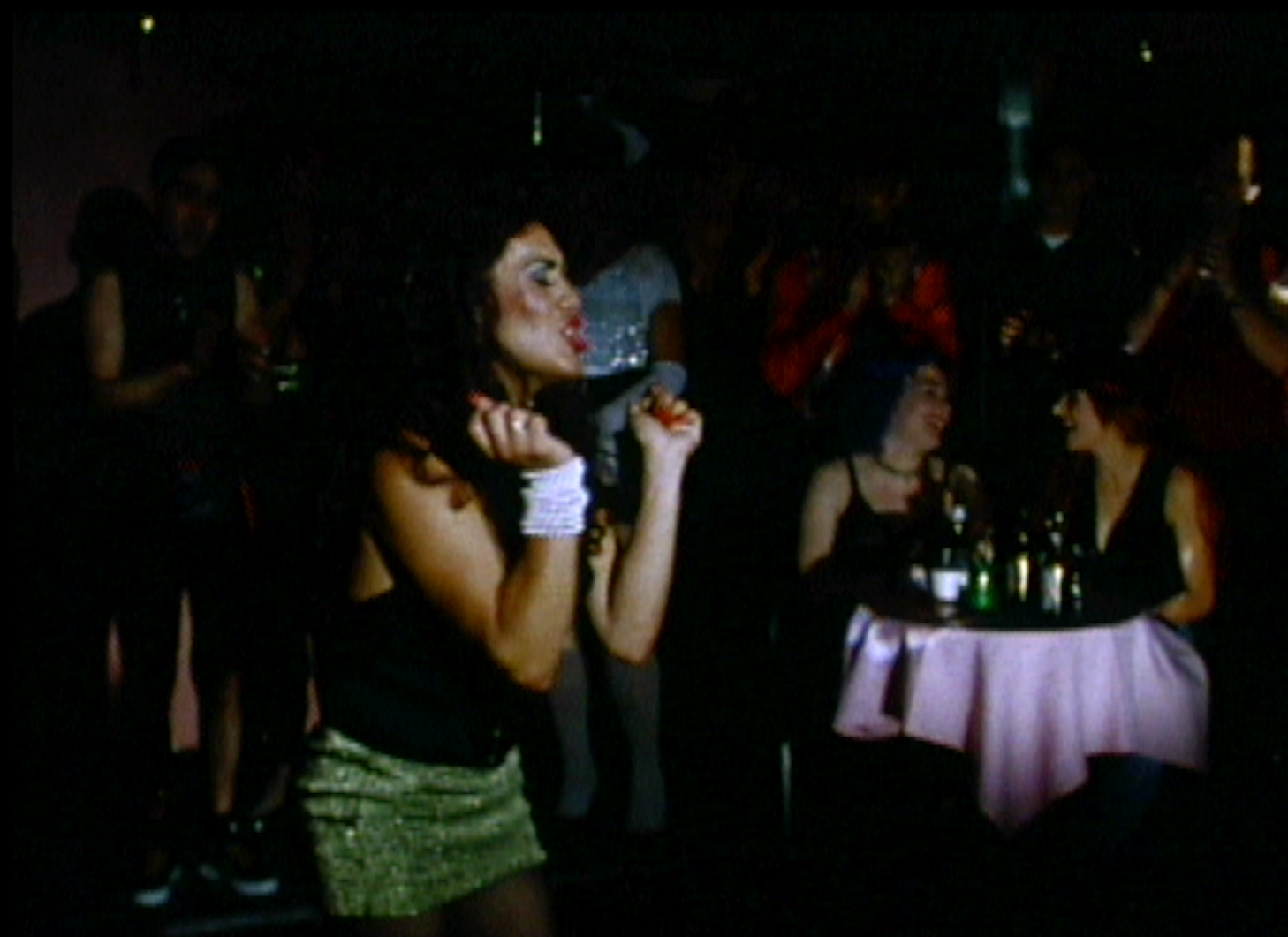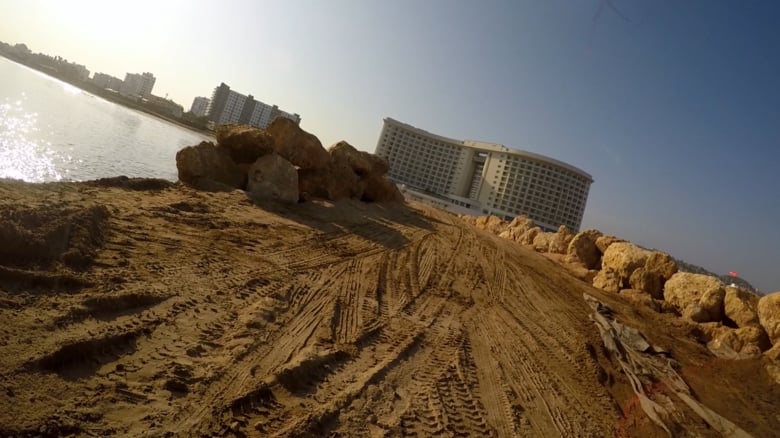
Café Ex, Ottawa, June 21, 2018
The Commons, 401 Richmond St. West, Toronto, July 7, 2018
Screening and book launch of the new Canadian Film Institute/Pleasure Dome publication Jorge Lozano Reports, edited by Mike Hoolboom, designed by Alexandra Gelis, with contributions by many luminous writers.
Discontinuity 5:08 minutes 2017
A series of titles announces that what we are about to see are found pics and sound, a home-brewed cassette of Sweet Jane and an orphaned roll of super 8 film. What follows is a kinetic, handheld home movie, shot in New York’s lower east during the 80s, mostly offering a blurry haze of coloured abstractions until at last the androgynous figure of Eve Mackey emerges on a rooftop, assertive and questioning. In this time capsule the artist offers his own work as found footage, as if he had many lives and selves, occupied multiple pasts and time zones.
Tampon Thieves 23:46 minutes 1994
One of a pair of 16mm movies made with a crew (!) and actor familiars, this handsomely produced short brings a garage aesthetic to its gender-bending cast. Gaybashing, feminism, and white supremacy ravel out in a prescient political tract that is also a family drama and love story.
The End of Thought 8 minutes 2002
This autobiographical essay video, stuffed with inventive text overlays, shows the artist caught between the worlds of his former home in Colombia and his new residences in Canada. This place between is also a celebration of fluid gender boundaries, travels of the heart and body, even as paramilitary forces try to lock down territory and identity. A complex weave of personal and political, as if the body was already the body politic.
Illegal_its effect on the body 37:07 minutes 2016
Illegal_its impact on the body showcases a harrowingly eloquent quartet of illegal immigrants living in Toronto, Canada. Each works a variety of routinely underpaid jobs, including dishwasher, janitor, metal shop hack, construction crew. Chief amongst the economic precariat, they are routinely exploited for free labour (you mean I have to pay you?) and sexual services.
In place of a talking head parade, the artist offers us a hallucinatory city portrait, each scene lensed as if from the vantage of a forbidden and alien presence, looking askance (sideways, the light streaking, hyperbolically coloured) at the neo-liberal showcase of this brave new city, remade in the image of its developers.
Jorge Lozano Reports
Saturday July 7, 2018
6:30 dinner, 8pm screening
The Commons, 401 Richmond St West, Toronto
Featuring a screening and book launch of the new Canadian Film Institute/Pleasure Dome publication: Jorge Lozano Reports (edited by Mike Hoolboom, designed by Alexandra Gelis, with contributions by many luminous writers).
Discontinuity 5:08 minutes 2017
A found super 8 reel of film and an old cassette tape with a “warped by time” version of Sweet Jane by Lou Reed provokes a visual reflection on history as discontinuity.
“A series of titles announces that what we are about to see are found pics and sound, a home-brewed cassette of Sweet Jane and an orphaned roll of super 8 film. What follows is a kinetic, handheld home movie, shot in New York’s lower east during the 80s, mostly offering a blurry haze of coloured abstractions until at last the androgynous figure of Eve Mackey emerges on the rooftop, assertive and questioning. In this time capsule the artist offers his own work as found footage, as if he had many lives and selves, occupied multiple pasts and time zones.” Mike Hoolboom
Tampon Thieves 23:46 minutes 1994
One of a pair of 16mm movies made with a crew (!) and actor familiars, this handsomely produced short brings a garage aesthetic to its gender-bending cast. Gaybashing, feminism, and white supremacy ravel out in a prescient political tract that is also a family drama and love story.
“Tampon Thieves is an elegiac drama that blurs the past and present as well as dreams and waking life. Zena and Tita are best friends and anti-capitalist gender warriors, preferring sex work to shit minimum wage jobs. THey’re living the high life in the queer Latinx underground, but queer/transphobic violence and the impending deaths of their grandmothers haunt them.” Kami Chisholm
How To Make a Beach To Get a Perfect Suntan 4:13 minutes 2018
Made in collaboration with Alexandra Gelis. A poetic exploration of how to build a beach in your own home. A study about the business of sand and its destruction of ecosystems. Recorded with four cameras over a period of one year.
This mini-essay features a series of theme and variations that looks at sand as the basis for scientific optics (ground glass, telescopes and microscopes, it makes possible micro and macro worlds), and as part of the death drive. A bulldozer shifts earth to produce a new beach (in order “to get a perfect sun tan” as the artists remark in the ironic title), “sand mining” that destroys local aquatic habitat. Meanwhile Alexandra Gelis, one-half of the creative couple, performs a ritual action, taking sand from the newly formed beach and spreading it across the land where it came from, dust to dust.
Tabula Raza 3 minutes 2009
In this tape the artist sends up John Locke’s theory of tabula rasa – that we are born with a blank slate of a mind, so that “all knowledge comes from experience.” Though he bends the phrase, displacing a single letter to produce “raza” or race. So much for blank pages.
The artist digitally slides into a series of “background” frames, wearing t-shirt slogans and in place of his head a Japanese momo doll face, blank of course, but digitally graffitied in Photoshop, each appearance offering a new translation of the world that he remains cut away from.
The picture procession offers an accelerated creation story, beginning with the origin of the world (the artist’s doll head reads “Bang”), abstract light shards, and then earth and insects. The earliest humans who appear are already soldiers shooting at each other (will we ever get along?) and they are followed by a posse of young men who appear to be protesting these predations, though their shirts are tagged with BMO logos (Bank of Montreal), re-marking them as assimilated corporate stooges. The Art Gallery of Ontario is translated as “Immigrart,” and over images of the artist himself from his Black Box movie, his head reads “Exit.” The movie ends in a semiotic smudge, the screen filled with softly turning letters, as the figure of the artist dissolves entirely.
Spider’s Zone 4:30 minutes 2018
While his pal Spider talks about the Zone in Tarkovsky’s Stalker, a suite of landscapes offer counterpoints and accompaniments. A winter’s tale. Camera drones map the land in a series of post-human encounters, the disembodied stares move in jerks and twists, or else in smoother-than-smooth tracking shots across the tundra. At the heart of the Zone in Tarkovsky’s movie is a room where each person is granted their wish. Though it must be noted that some of the crew, as well as Tarkovsky and his partner, died after contracting illnesses during the endless reshoots in a poisoned industrial landscape. In Lozano’s retake, handheld tracking shots through an emptied apartment/school offer domiciles for possible lives, but speak also of abandonment and catastrophe (why are all these rooms empty?). In the end the artist remarks: “so we are in the Zone.”
Illegal_its impact on the body 37:07 minutes 2016
A compilation of histories of illegal immigrants in Canada, nomadic friends who quickly disappeared into new identities or were forcibly deported. There are approximately 200,000 illegal immigrants in Canada. This video only begins to suggest their constant re-invention of freedom, endurance, and resistance. The last amnesty was in the 1980s. The only pathway to legal status is making a Humanitarian and Compassionate application that has an estimated success rate of just five percent.
“In place of a talking head parade, the artist offers us a hallucinatory city portrait, each scene lensed as if from the vantage of a forbidden and alien presence, looking askance (sideways, the light streaking, hyperbolically coloured) at the neo-liberal showcase of this brave new city, remade in the image of its developers.” Mike Hoolboom
